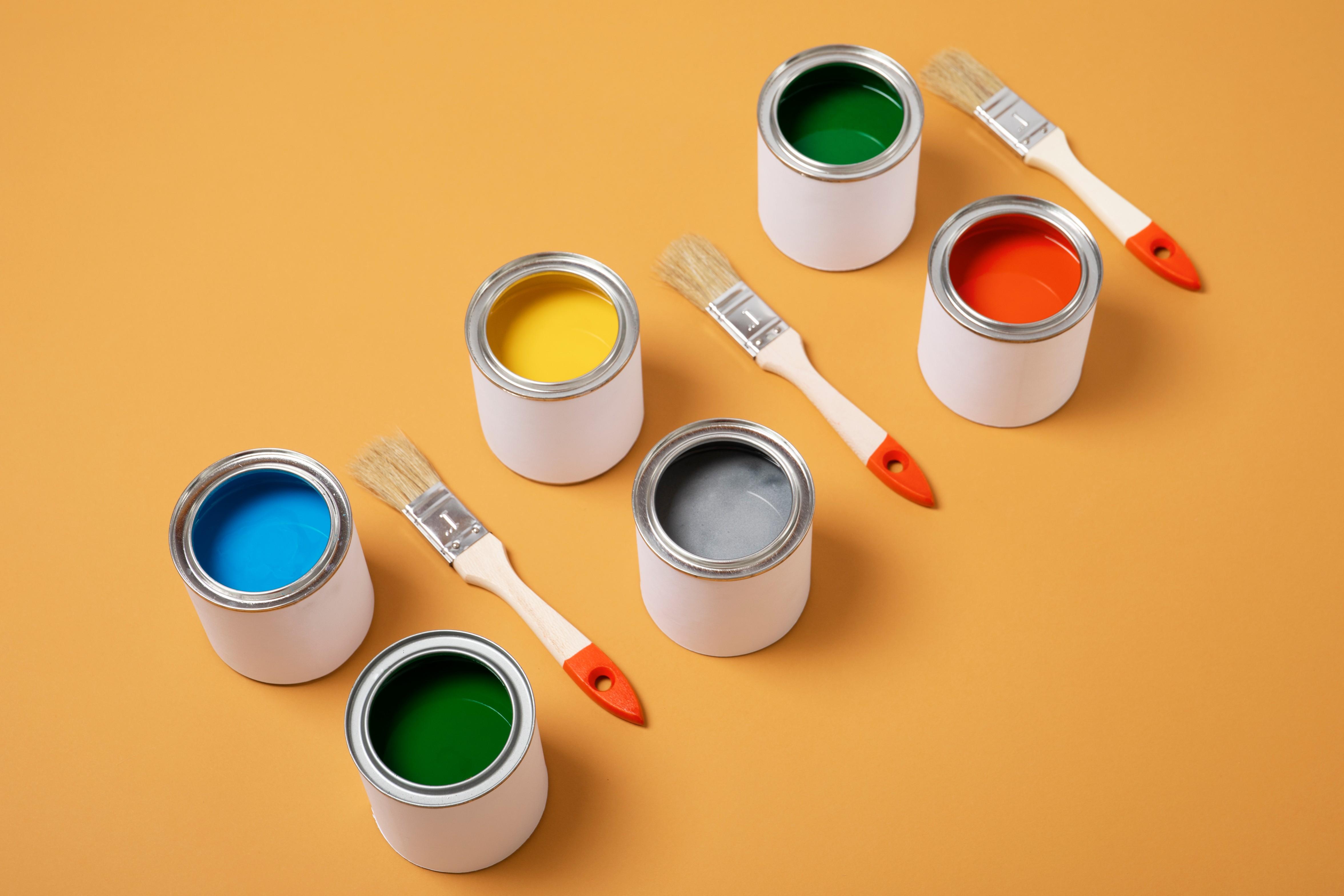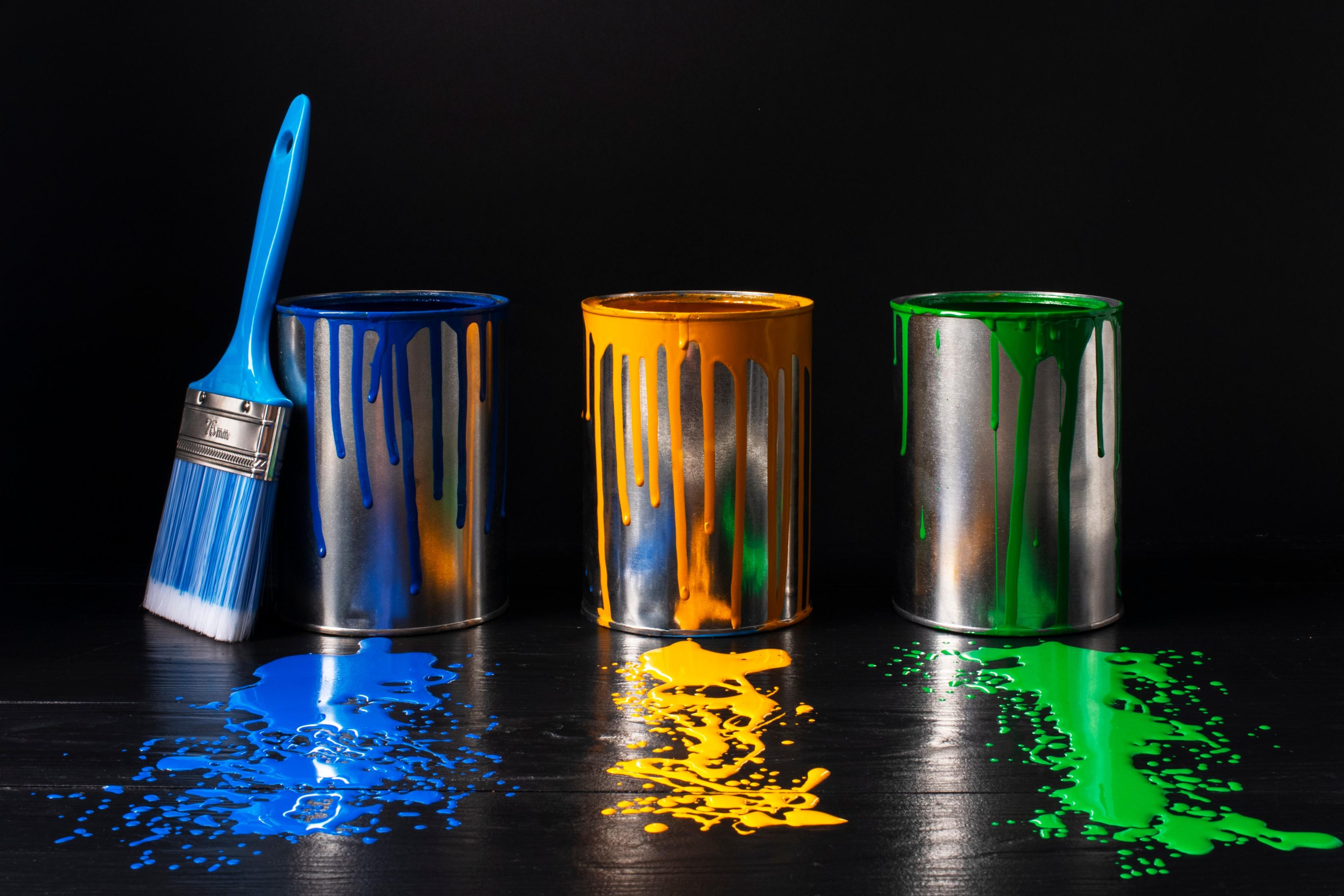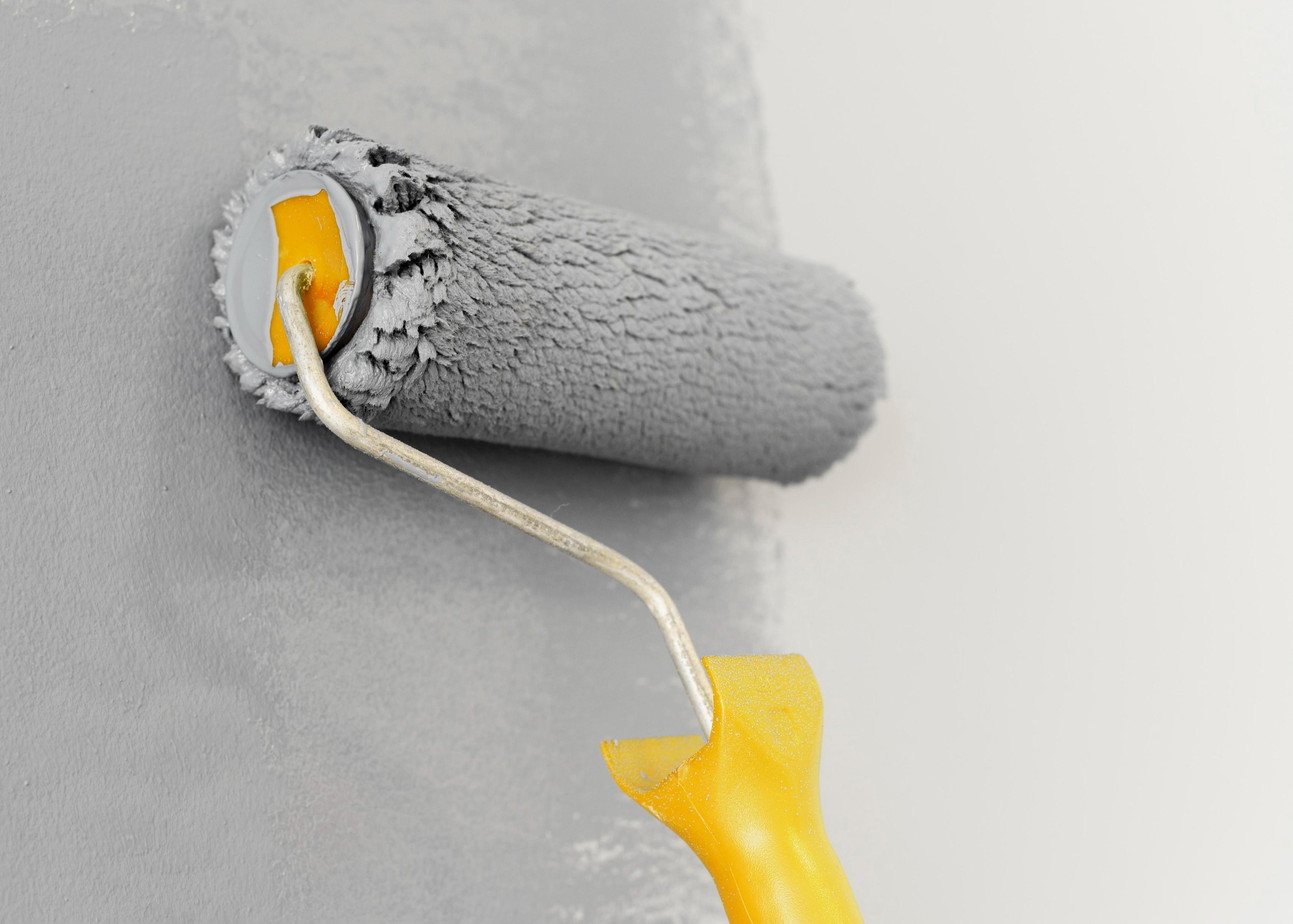



Table of Contents
- What are Plastic Paints?
- Types of Plastic Paints
- How Are Plastic Paints different from Water Based Paints?
- Advantages of Plastic Paints
- Disadvantages of Plastic Paints
- Surfaces Which Are Not Best For Plastic Paints
- Surfaces Where Plastic Paints Are Suitable
- Most Popular Color Choice for Plastic Paints in India
- Are There Any Health Concerns when Using Plastic Paints?
- Plastic Paint Price Range
- Conclusion
- Faq's
In 2025, plastic paints, often referred to as advanced emulsion paints, continue to dominate the market as a preferred choice for interior and exterior walls. Renowned for their enhanced durability, effortless application, and an extensive palette of vibrant colors, these paints have become a staple in modern homes. Composed of water, binders, pigments, and specialized additives, plastic paints deliver a sleek, long-lasting finish that stands up to the challenges of everyday wear. With a higher concentration of plastic polymers compared to traditional emulsions, they offer a silkier, smoother surface, making it easier to wipe away stubborn dirt or stains with a damp cloth. This ensures your walls remain immaculate and vibrant, elevating the aesthetic appeal of your spaces for years to come.
What are Plastic Paints?
Plastic paints, also known as emulsion paints, are a popular choice for both interior and exterior walls due to their durability, easy application, and wide range of colors. They are made from a combination of water, binders, pigments, and additives that provide a smooth and durable finish.
Plastic paints contain a higher proportion of plastic compared to traditional emulsion paints. The more plastic in the paint, the silkier and smoother the finish will be. This allows stubborn dirt to be easily washed off with a wet cloth, keeping the walls looking fresh for years.
Also Read: Mastering the Art of Paint Putty: Your Ultimate Guide to Surface Preparation
Types of Plastic Paints

Economical Plastic Paints
Tractor Emulsion - This is a popular choice for interior walls, providing a lead-free matte finish with 1.5 times more coverage compared to distempers. It is available in over 1800 different shades, allowing you to easily match your home's decor.
Interior Promise - This plastic paint features anti-chalking properties that prevent the paint film from being damaged by environmental elements. It also includes Chroma-Brite technology to deliver a long-lasting, bright and glowing finish to your walls.
Premium Plastic Paints
These paints offer a more luxurious texture and finish for upgraded interiors. They provide a smoother, silkier, and more durable surface compared to economical options.
Finishes
Plastic paints are available in a variety of finishes for walls:
- Matte - Provides a flat, velvety appearance.
- Satin - Offers a soft, subtle sheen.
- Semi-gloss - Has a higher sheen level for a more reflective finish.
- Glossy - Produces a high-shine, mirror-like appearance.
The choice of finish depends on personal preference and the desired aesthetic for the space.
Also Read: Simple Wall Painting Designs to Elevate Your Home Decor
How Are Plastic Paints different from Water Based Paints?
The main differences between water-based and plastic paints are:
Feature | Water-Based Paints | Plastic Paints |
Composition | Contain a plastic resin suspended in water | Contain a higher proportion of plastic binders |
Durability | Less durable finish | Provide a tougher, more durable finish resistant to scuffs and stains due to acrylic latex and micro-pigments |
Cleaning | Dirt and stains not as easily removed | Dirt and stains can be easily removed with a wet cloth, keeping walls looking fresh for years |
Odor | Have a slight odor that dissipates quickly | Virtually odorless |
Application | Can be affected by humidity and temperature extremes | More tolerant of varying weather conditions, can be applied in temperatures as low as 50°F |
Drying Time | Can be recoated in as little as 1-2 hours | Take 2-4 hours to dry completely |
Environmental Impact | Have lower levels of volatile organic compounds (VOCs), more environmentally friendly | Have higher levels of VOCs |
Cost | Less expensive | More expensive |
In summary, plastic paints offer a more durable, easy-to-clean finish but are more costly. Water-based paints are more environmentally friendly, have less odor, and are easier to apply in ideal conditions. The choice depends on the specific project requirements and personal preferences.
Advantages of Plastic Paints
Durability
Plastic paints are made from a combination of pure acrylic latex and high-opacity micro-pigments, which makes the paint surface tough and long-lasting. The higher proportion of plastic binders compared to traditional emulsion paints provides a more durable finish that is resistant to scuffs and stains.
Easy Cleaning
One of the key advantages of plastic paints is their easy maintenance and cleaning. Dirt and stains can be easily removed from plastic painted walls with a wet cloth, keeping them looking fresh for years. The washable nature of plastic paints allows stubborn dirt to be cleaned off, retaining the smooth and silky finish.
Wide Color Range
Plastic paints are available in a vast array of colors, with some brands offering over 1800 shades to choose from. This wide color selection allows you to easily match your home's decor and create the desired ambiance.
Odorless and Low Toxicity
Water-based plastic paints are virtually odorless and do not contain harmful chemicals or petroleum derivatives. This makes them a safer and more environmentally friendly choice compared to other paint types.
Quick Drying
Plastic paints typically dry within 2-4 hours, allowing for faster project completion compared to other paints.
Disadvantages of Plastic Paints

Environmental Impact
While plastic paints are less toxic than some alternatives, they are still made from synthetic materials that can contribute to pollution. The manufacturing process and disposal of plastic paint containers can have an environmental impact.
Limited Breathability
Plastic paints can trap moisture in walls, leading to issues like peeling and mold growth. This reduced breathability can be a concern in areas with high humidity or moisture levels.
Higher Cost
Plastic paints tend to be more expensive compared to other paint types, such as distempers. The higher proportion of plastic binders and specialized formulations contribute to the increased cost.
Difficult Repairs
Repairing damaged areas on plastic painted walls can be challenging, as it may be difficult to seamlessly blend in the new paint with the existing surface. This can be a consideration if you anticipate needing to make repairs in the future.
Plastic paints offer a durable, easy-to-clean, and versatile option for both interior and exterior walls. While more expensive than some alternatives, their benefits often make them a worthwhile investment for many homeowners. However, it's important to consider the potential environmental impact and limited breathability when choosing plastic paints for your project.
Surfaces Which Are Not Best For Plastic Paints

Even as Plastic paints have its many advantages, here are a few surfaces where plastic paints are not recommended:
Highly Humid or Moisture-Prone Areas:
The search results indicate that plastic paints can have limited breathability, which can lead to issues like peeling and mold growth in areas with high humidity or moisture levels.
Exterior Surfaces Exposed to Weather:
While plastic paints can be used on some exterior surfaces, they may not be the best choice for areas that are constantly exposed to harsh weather conditions like rain, sun, and temperature extremes.
Surfaces Requiring Frequent Repairs:
The search results note that repairing damaged areas on plastic painted walls can be challenging, as it may be difficult to seamlessly blend in new paint with the existing surface. This can be a consideration if you anticipate needing to make frequent repairs.
Certain Plastic Surfaces:
Certain type of plastic being painted can impact the adhesion and long-term durability of the paint. Proper surface preparation is crucial, and certain plastic types may not be compatible with plastic paints without additional priming or special formulations.
While plastic paints are versatile and suitable for many interior and some exterior applications, they may not be the best choice for highly humid areas, exterior surfaces exposed to extreme weather, surfaces requiring frequent repairs, or certain types of plastic substrates that require specialised preparation or coatings.
The decision should be based on the specific project requirements and the limitations of plastic paints.
Also Read: Wallpaper for Home vs Wall Stickers for Home: A Comparison
Surfaces Where Plastic Paints Are Suitable
Plastic paints are suitable for a variety of surfaces, but there are some specific surfaces where they are recommended:
Polyethylene (PE): Plastic paints work well on polyethylene surfaces commonly used for items like lawn chairs, picnic tables, and bird feeders.
Polypropylene (PP): Polypropylene surfaces, such as garden chairs, watering cans, and wheelbarrows, can be painted effectively with specialized paints or multi-surface acrylic paints.
UPVC: Plastic paints are often used to paint UPVC surfaces, which are commonly found in doors, window frames.
Interior Walls: Plastic paints, also known as emulsion paints, are a popular choice for interior walls due to their durability, easy application, and wide range of colors.
Exterior Surfaces: While plastic paints can be used on some exterior surfaces, they may not be the best choice for areas constantly exposed to harsh weather conditions like rain, sun, and temperature extremes.
It's important to note that proper surface preparation is crucial for achieving good paint adhesion on plastic surfaces.
This typically involves cleaning the surface thoroughly, lightly sanding to create a rougher texture, and applying a primer before painting.
Most Popular Color Choice for Plastic Paints in India
Some of the most popular color choices for plastic paints in India:
White: White is a classic and versatile color that remains one of the most popular choices for plastic paints, especially for interior walls. It helps to brighten and open up spaces.
Neutral Tones: Shades of beige, gray, and off-white are also very common and in-demand for plastic paints. These neutral colors work well for creating a calming, sophisticated look.
Pastel Shades: Soft, muted pastel colors like light blues, greens, pinks, and yellows are popular choices for plastic paints. They provide a gentle, soothing aesthetic.
Earth Tones: Earthy colors like terracotta, ochre, and olive green are trendy options, especially for exterior surfaces or to create a natural, rustic ambiance.
Bold, Vibrant Colors: While more subdued tones are common, many homeowners also opt for bolder, richer colors like deep reds, blues, and greens to make a statement.
Most popular color choices often depend on personal preferences, interior design trends, and the specific application (interior vs exterior).
However, classic neutrals, pastels, and earth tones seem to be consistently favored for plastic paint applications in Indian homes.
Are There Any Health Concerns when Using Plastic Paints?
While plastic paints offer benefits like durability and easy cleaning,there are some potential health and environmental concerns associated with their chemical composition and therefore should be carefully considered, especially for vulnerable populations and enclosed indoor spaces.
 Health Concerns when using Plastic Paints at Home
Health Concerns when using Plastic Paints at Home
Volatile Organic Compounds (VOCs):
Many conventional paint products, including some plastic paints, contain high levels of VOCs. These VOCs can off-gas and release harmful chemicals into the indoor air, leading to short-term effects like headaches, dizziness, and nausea, as well as more severe long-term issues like respiratory problems and organ damage.
Endocrine Disruptors:
Some binders used in modern paints, including plastic paints, can contain endocrine-disrupting molecules. These compounds can interfere with the hormonal systems of both humans and wildlife, potentially causing significant health and environmental impacts.
Risks for Vulnerable Populations:
Certain groups, such as pregnant women, babies, children, and pets, may be more susceptible to the negative health effects of paint fumes and chemicals. Exposure during critical developmental stages can increase the risk of congenital abnormalities, allergies, asthma, and other issues.
Biocides and Preservatives:
Some paints, including plastic paints, may contain biocides and preservatives to prevent microbial growth. These chemicals can also pose health risks through skin irritation, organ damage, and environmental contamination.
Plastic Paint Price Range
The cost of plastic paints can range from around ₹70 per liter to ₹454 per liter, depending on the brand and quality.
Pricing by Brand
Asian Paints
- 1 Liter: ₹316
- 4 Liters: ₹983
- 10 Liters: ₹3,260
- 20 Liters: ₹6,320
Berger Paints
- 1 Liter: ₹220 - ₹260
- 4 Liters: ₹700 - ₹850
- 10 Liters: ₹1,500 - ₹1,800
- 20 Liters: ₹3,000 - ₹4,000
Kansai Nerolac Paints
- 500 ml: ₹130 - ₹160
- 1 Liter: ₹250 - ₹300
- 4 Liters: ₹750 - ₹850
- 10 Liters: ₹1,600 - ₹1,900
- 20 Liters: ₹3,200 - ₹3,800
Dulux
- 1 Liter: ₹134 - ₹150
- 4 Liters: ₹600 - ₹1,100
- 10 Liters: ₹1,400 - ₹1,600
- 20 Liters: ₹2,000 - ₹2,300
Plastic paints are generally more expensive than traditional emulsion paints, but their durability and easy maintenance make them a worthwhile investment for many homeowners. Prices can vary significantly based on the brand, quality, and quantity purchased. Popular brands in India include Asian Paints (59% market share), Berger Paints (18%), Nerolac Paints (15%), and ICI Dulux (7%).
Conclusion
Plastic paints are a versatile and popular choice for both interior and exterior walls, offering a durable, easy-to-clean finish in a wide range of colors. While more expensive than some alternatives, their benefits often make them a worthwhile investment for many homeowners. However, it's important to consider the potential health and environmental concerns associated with their chemical composition, especially for vulnerable populations and enclosed indoor spaces.
explore further
Latest from Contemporary ideas
More from Innovations
Resources
Dwello, for every home buyer, is a way to go from 'I feel' to 'I know', at no extra cost.




